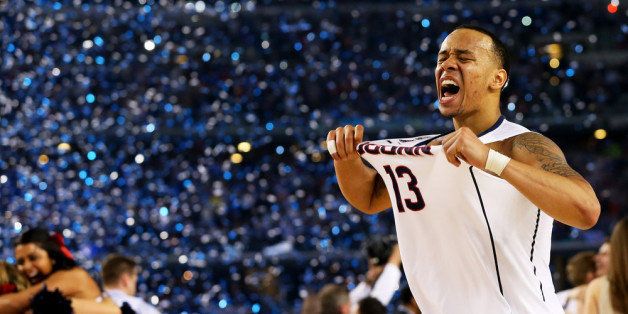
The National Labor Relations Board (NLRB) recently shook the world of amateur sports by defining a college football player as an employee of a university and by presenting Northwestern's team with the right to unionize. It broached the issue of whether student athletes are being compensated sufficiently. And although unionization isn't a flawless answer to this question, it serves as a step in the right direction to attain equity for college athletes.
As Sally Jenkins of The Washington Post wrote, the NLRB ruling arguably "open[ed] up more questions than answers." Should all athletes -- whether the quarterback of a championship football team or benchwarmer of an unimportant bowling squad -- receive equal treatment? If athletes are employees, are their scholarships taxable? Who will represent them in bargaining? The list of ensuing questions continues.
For this reason, NCAA President Mark Emmert called unionization a "grossly inappropriate" solution to the challenges facing college sports that "would blow up everything about the collegiate model of athletics."
"You're either a student at a university playing your sport or you're an employee of the university," he argued.
However, the issue lies within the gaping hole in this statement. There's no need to look further than simple work-study programs instituted across the county, which reflect that college educations are often two-way partnerships between the student and university. College athletes are merely amplified models of this partnership because, just as their schools' presidents and admissions officers, they are working to represent their universities. Contrary to Emmert's statement, therefore, these athletes are both "students" and "employees."
Unfortunately, however, the athletes' latter role is not being respected, and the two-way partnership has become blatantly one-sided.
Two days ago, Shabazz Napier, the star point-guard of the championship-winning Connecticut Huskies, said there have been nights when he goes to sleep "starving" because he doesn't have enough money to buy food. Simultaneously, colleges were combining to generate $14.3 billion in revenue during the 2012-2013 fiscal year. Former NBA player and University of Michigan star Chris Webber further illuminated this discrepancy by telling how as a freshman he would receive no compensation for his replica jersey sold for $75 at the campus store.
Yet these athletes are expected to show up to practice each day and answer to the likes of Syracuse Basketball Coach Jim Boehim and Michigan State's Tom Izzo, who have publicly decried the idea of paying college athletes, while they're set to respectively earn $1.8 million and $3.9 million in 2014.
As Napier said, "I don't feel student-athletes should get hundreds of thousands of dollars, but like I said, there are hungry nights that I go to bed and I'm starving." This quote encompasses the notion that athletes aren't asking for much; just a reasonable amount of monetary compensation for their services. The NCAA and universities are using their leverage as the rule-setting bodies to exploit athletes for their services. They are capitalizing on the brands their athletes have formed, which generate professional sports-level revenue, yet not duly compensating them.
So instead of simply denouncing unionization, the NCAA should address the underlying concerns and present a plan for compensating athletes with more than just sweat-suits and athletic shoes.
As aforementioned, unionization is not a panacea for this issue, but it is a step in the right direction. It makes the bold statement that the treatment of college athletes deserves reevaluation and that athletes are willing to fight the NCAA until they achieve justice.